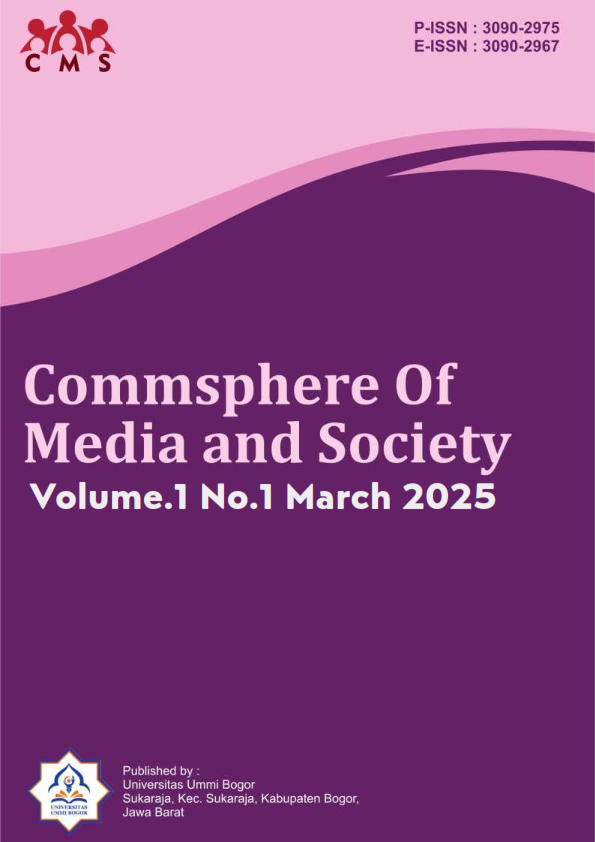Human Self-Concept Statue at Fatahillah Museum Jakarta
Keywords:
Dramaturgy, Human Statue, Phenomenon, Self-ConceptAbstract
This study aims to analyze the concept of self of human statues using Erving Goffman's Dramaturgy Theory approach as the main theory and George Herbert Mead's Symbolic Interaction. Specifically, this study aims to describe and analyze the concept of self of human statues, describe and analyze the front stage and back stage, and the symbolic interaction of human statues. The presence of street art expressions or what is commonly referred to as Street art, various forms of street art culture are now developing from murals, to what is now a phenomenon, namely the presence of human statues or humanoids that are crowded in the old city. This type of research is qualitative which assumes that systematic research must be carried out in a natural environment and not an artificial environment such as experiments. Data collection through observation and in-depth interviews with 5 (five) Human Statues and the Head of UPK Kota Tua as informants. Data analysis uses an interactive model, namely data reduction, data presentation and drawing conclusions. The conclusion obtained from the study is the concept of self that occurs in two areas, namely the front stage (front area) and back stage (back area).What is interesting from the results of this study is the picture that human statues have a self-concept to be appreciated socially as what is played on the front stage. In the end, the self-concept will be displayed in front of visitors.
References
Afandi, A. K. (2007). Phenomenology: Understanding Edmund Husserl's thoughts. Surabaya: eLKAF.
Arikunto, S. (2005). Research procedures: A practical approach. Jakarta: Rineka.
Bandura, A., & Walters, R. (1963). Social learning and personality development. New York: Holt.
Bandura, A., Ross, D., & Ross, S. A. (1963). A comparative test of status envy, social power, and secondary reinforcement theories of identification learning. Journal of Abnormal and Social Psychology.
Basrowi, & Sukidin. (2002). Micro perspective research methods: Grounded theory, phenomenology, ethnomethodology, ethnography, dramaturgy, symbolic interaction, hermeneutics, social construction, discourse analysis, and reflection methodology. Surabaya: Insan Cendekia.
Bungin, B. (2011). Qualitative research: Communication, economics, public policy and other social sciences. Jakarta: Kencana Prenada Media Group.
Burns, R. B. (1993). Self-concept (Theory of measurement, development, and behavior). Jakarta: Archangel.
Djalaluddin, R. (1994). Communication psychology. Bandung: PT Remaja Rosdakarya.
Febrianto, D. (2015). The establishment of mimer in the creative process of pantomime performance. Journal of Society, Culture and Politics, 28(4), 211-218. Journal of the Anthropology Study Program, FIB, Brawijaya University Students, Malang.
Fitts, W. H. (1971). The self-concept and self-actualization. California: Western Psychological Services.
Hanafi, D. (2016). Representation of women in truck bed paintings. Postgraduate Thesis, University of Sahid Jakarta.
Herdiansyah, H. (2010). Qualitative research methods for social sciences. Jakarta: Salemba.
Hermawan, K. (2008). The meaning of community. Jakarta: PT Gramedia Pustaka Utama.
Hurlock, E. (1999). Developmental psychology: A life-span approach (5th ed., Trans. Istiwidayanti). Jakarta: Erlangga.
Iriantara, Y. (2004). Community relations: Concepts and applications. Bandung: Simbiosa Rekatama Media.
Kusmiati, A., et al. (1999). Visual communication design. Jakarta: Djambatan.
Kusrianto, A. (2007). Introduction to visual communication design. Yogyakarta: Andi Offset.
Kuswarno, E. (2009). Phenomenological communication research method: Concept, guidelines, and examples of research on the phenomenon of beggars in Bandung City. Bandung: Widya Padjajaran.
Lapalu, E. S. U. (2013). Societas Indonesia Masa Kini: Discourse on phenomenology on religion, politics, law, culture, and postmodernity. Journal Societas Indonesia, 7(4), 461.
Littlejohn, W. S., & Foss, K. A. (2011). Communication theory. Jakarta: Salemba Humanika.
Manco, T. (2002). Graffiti stencils. London: Thames and Hudson.
Moleong, L. J. (2007). Qualitative research methodology. Bandung: PT Remaja Rosdakarya.
Mulyana, D. (2004). Qualitative research methodology: New paradigm of communication science and other social sciences. Bandung: Remaja Rosdakarya.
Neuman, W. L. (1997). Social research methods: Qualitative and quantitative approaches (3rd ed.). Boston: Allyn and Bacon.
Onong, U. (2003). Science, theory, and philosophy of communication. Bandung: PT Citra Aditya Bakti.
Ritzer, G. (2004). Modern sociological theory. Jakarta: Prenada Media.
Saragi, D. (2011). Symbolic dimensions of Batak megalithic statues: A study according to Sussanne Knauth Langer's aesthetic concept. Journal of Humanities.
Soekanto, S. (1993). Sociological theory of social structure. Jakarta: PT Raja Grafindo Persada.
Sugiono. (2005). Administrative research methods. Bandung: Alfabeta.
Sugiyono. (2008). Qualitative and R&D quantitative research methods. Bandung: Alfabeta.
Wirawan, I. B. (2012). Social theories in three paradigms: Social facts, social definitions, and social behavior. Jakarta: Kencana Prenada Media Group.
Downloads
Published
Issue
Section
License
Copyright (c) 2025 Journal of Communication Cakrawala

This work is licensed under a Creative Commons Attribution-ShareAlike 4.0 International License.





